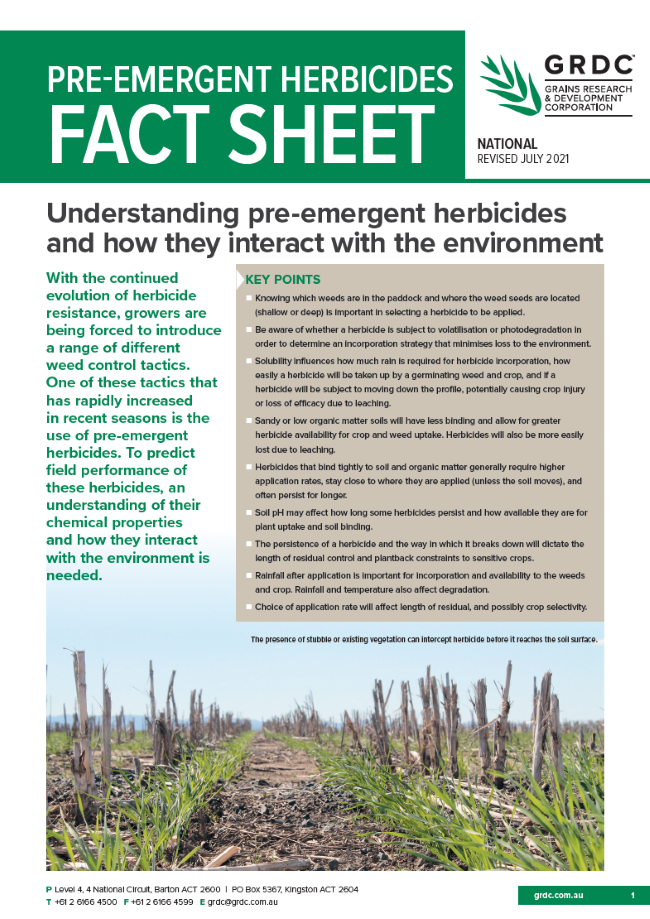Pre-emergent herbicides fact sheet
Pre-emergent herbicides fact sheet
Published: 11 Apr 2022
With the continued evolution of herbicide resistance, growers are being forced to introduce a range of different weed control tactics.
One of these tactics that has rapidly increased in recent seasons is the use of pre-emergent herbicides. To predict field performance of these herbicides, an understanding of their chemical properties and how they interact with the environment is needed.
Key points
- Knowing which weeds are in the paddock and where the weed seeds are located(shallow or deep) is important in selecting a herbicide to be applied.
- Be aware of whether a herbicide is subject to volatilisation or photodegradation inorder to determine an incorporation strategy that minimises loss to the environment.
- Solubility influences how much rain is required for herbicide incorporation, howeasily a herbicide will be taken up by a germinating weed and crop, and if aherbicide will be subject to moving down the profile, potentially causing crop injuryor loss of efficacy due to leaching.
- Sandy or low organic matter soils will have less binding and allow for greaterherbicide availability for crop and weed uptake. Herbicides will also be more easilylost due to leaching.
- Herbicides that bind tightly to soil and organic matter generally require higherapplication rates, stay close to where they are applied (unless the soil moves), andoften persist for longer.
- Soil pH may affect how long some herbicides persist and how available they are forplant uptake and soil binding.
- The persistence of a herbicide and the way in which it breaks down will dictate thelength of residual control and plantback constraints to sensitive crops.
- Rainfall after application is important for incorporation and availability to the weedsand crop. Rainfall and temperature also affect degradation.n Choice of application rate will affect length of residual, and possibly crop selectivity
Download PDF
Region: National
GRDC Project Code: ICN1811-001SAX,

